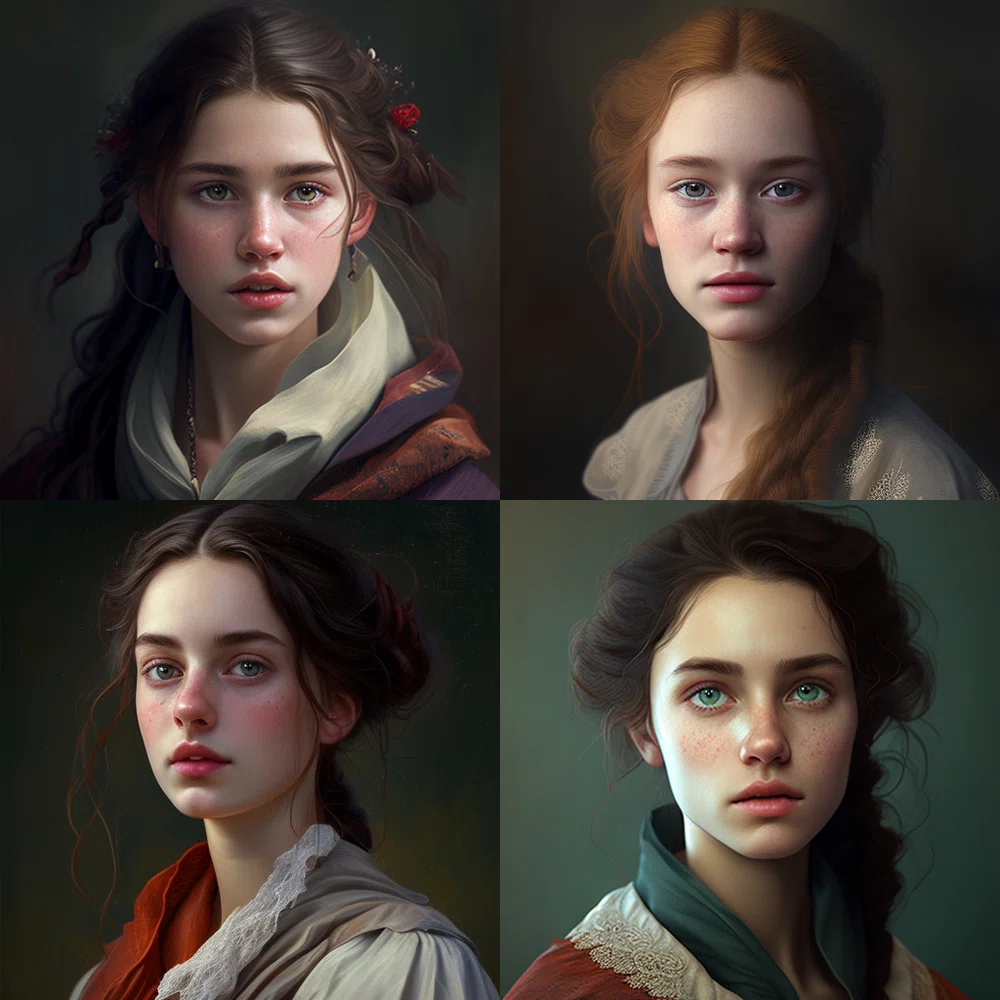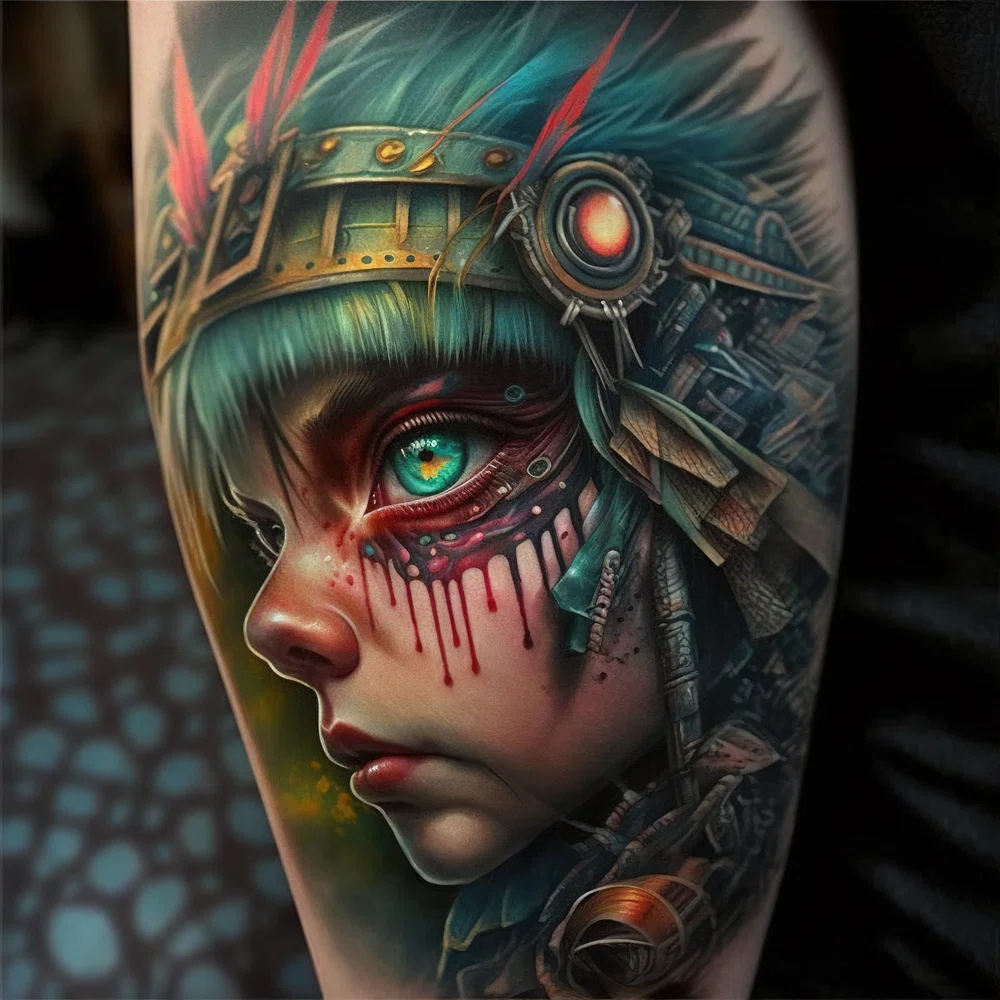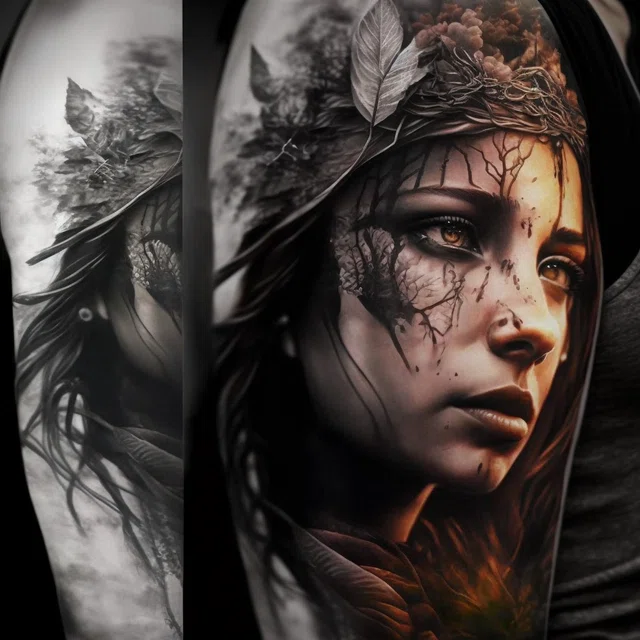Is it possible to design tattoos with AI?
The use of Midjourney in tattoo design
25 May 2023
In recent times, there has been exponential growth in the use of Artificial Intelligence, and the implementation of these technologies in various areas is a topic of significant discussion.
The debate surrounding the benefits and drawbacks of AI usage is somewhat controversial, particularly when encountering individuals with contrasting opinions. However, it is undeniable that AIs are poised to revolutionize our habits and prompt us to rethink almost every aspect of our lives.
The rapid advancement of these intelligences presents us with a challenging situation, especially when considering the potential for automation and acceleration of certain aspects of our lives.
The application of AI in the field of tattoos has quickly emerged. There has been talk for some time about how the process of designing tattoos can undergo significant changes with the implementation of intelligent systems that automate a substantial portion of the process.
But is it truly feasible to design tattoos with AI? What programs can be utilized? Can the designs generated be considered of high quality?
We will delve into these questions in the following discussion. Let's explore further.
Midjourney and its use in tattoos
When talking about artificial intelligence, we can think of several. The first one that can appear to us is ChatGPT, being one of the most used for creating texts and searching for information automatically.
But there are many others, such as intelligence designed to create images. Among them, the most used is Midjourney.
Midjourney is a platform that uses artificial intelligence to create unique illustrations and images. It takes a large database as a reference and from a few indications from users they can create their own designs in just a few moments.
How to use it? Well, very simple, you enter its official page and click on the “Join the Beta” option. This will redirect you to the Discord community, where you will find countless servers. Accessing any of them, you will be able to access a chat where countless users create their illustrations live.
Typing the next coordinate /imagine followed by the keywords to create your illustration, for example medieval girl, and hitting enter, in a few seconds you will see not one but four different options, which you can customize and adjust as many times as you want.
Remember that the phrase in the chat should stay /imagine medieval girl, all like this followed and without points.
You will see that below the four images you will have some options: U1, U2, U3, U4, followed by V1, V2, V3, V4. If, for example, you liked the first image a lot and you want to save it at a higher resolution, click on U1, and it will generate a final render with much more detail.

But if, instead, you would like to have other options based on the first image, click V1, and it will provide you with four alternative options. This way, you can continue to iterate and improve until you find the render that best suits your preferences, which can serve as a reference for the design of your tattoo.
Isn't it wonderful? But...
Can AI-designed tattoos be considered original?
Those of us with several years of experience with tattoos always recommend learning and learning how to draw, not only to know how to design, compose and understand an image but also to achieve own style in tattoos, something so fundamental in this area.
But what happens when a design is created by an artificial intelligence? Can it truly be considered an original design?
There are those who argue that tattoos must be exclusively designed by artists in order to be considered original. Some even claim that a true tattoo artist must possess exceptional artistic skills to be regarded as a serious professional.
The truth is, the implementation of these intelligences can challenge the sensibilities of the most skeptical individuals, and this reaction is understandable.
Imagine dedicating years of your life to learning how to draw and create extraordinary designs, only to have all of that seemingly diminished by an intelligence that can produce them in a matter of seconds. It's natural for anyone to feel frustrated by this.
However, let's pause and reflect on this matter.
While it is true that artificial intelligence automates certain aspects of the work, it is not accurate to say that it does all the work.
What do we mean by this?

To begin with, a design will always require modifications, primarily to adapt it to the specific area of the body where the tattoo will be placed, retouch the colours according toclient's skin tones, or because you have to adapt it to your style, etc.
In other words, there will always be a human element that machines cannot replace.
Tattooing ultimately relies solely on the tattoo artist who assembles the needles, selects the colours, and applies the tattoo to the client.
Artificial intelligence can assist and streamline the design process, but it should be viewed as a tool rather than an adversary. By embracing AI, tattoo artists can save time in the design phase and allocate it to other aspects of their work.
However, it is crucial for serious and reliable professionals to treat AI-generated images as a starting point rather than the final design.
These illustrations serve as valuable references, offering alternative options that the artist may not have considered.
Nonetheless, it is essential not to neglect one's personal style and artistic imprint in tattoos, as this is what sets an artist apart from others.
The real skill lies in the artist's ability to further enhance and customize the design. This is where the artist's knowledge and proficiency in drawing come into play.
While we embrace and appreciate technological advancements, it is important not to become complacent, as this mindset can directly impact the quality of your tattoos.
As a tattoo artist, it is crucial to continuously practice drawing techniques to refine your skills, not only in composition but also in the agility and precision of your strokes.
This practice will enable you to tackle unforeseen challenges during the tattooing process, such as improvising lines on the spot and solving issues of FreeHand style. Without a solid foundation in drawing and mastery of your tattooing tools, the outcome may suffer.
In summary, we can acknowledge that AI is a powerful tool, but it cannot do everything for you.
It is essential to maintain your own artistic abilities and not solely rely on AI-generated designs. However, there is another issue at hand, one that is more closely tied to moral considerations:
Are images created with AI really tattoo art?
This is where the crux of the matter lies. There is a very juicy debate regarding how the work that illustrators and cartoonists can do vs. the work of artificial intelligence.
Many people think that they come to “unseat” artists, since they mean less cost and are very accessible. But is it true?
Well, partly yes and partly no. As we said above, there will always be a share of human ability that is irreplaceable. However, the results obtained are increasingly brilliant, putting many artists on alert.
The biggest benefit that we find in this use is that all the images created, both by Midjourney, Dall-E, and others, are original and unique.

This means that any face, figure, or landscape you create with the AI will be an unrepeatable creation, which would pose a great solution to the issue of copyright and the copycat in tattoos.
Problems with copyright and design theft could be solved thanks to these creations. So, we would stop seeing, for example, the same butterfly tattoo repeated or the same Tradi design on each client.
Furthermore, there would be no issue with images of people with realistic face tattoos because AIs, from a large database, can generate faces of people who do not exist, which is wonderful.
Indeed, it is true that AI can have both positive and potentially disruptive impacts across different sectors. Throughout history, various technologies have emerged that replaced certain forms of production, but they also led to the creation of new professions and job opportunities.
When it comes to art, particularly tattooing, the key lies in the ability to customize designs and not simply settle for what AI proposes. Drawing is an integral part of the tattooing process, and one cannot exist without the other. To be a skilled tattoo artist, having drawing skills is essential. It is not necessary to be an expert, but having a good understanding of drawing tools and techniques can greatly enhance your professional development.
So, is AI replacing the work of designers? The answer is a resounding no. AI should be seen as a digital tool that can aid and inspire artists, but it cannot replace human creativity, personal touch, and the ability to interpret clients' desires. It is important to continue learning and honing your skills to continually improve and distinguish yourself in your work.
Rather than fearing AI, embrace it as a tool that can complement and enhance your artistic abilities. By leveraging the benefits of AI while maintaining your unique artistic vision, you can continue to thrive in your profession.
If you want to know more about tattoos and instruct yourself in this profession, 10 Masters accompany you throughout your process and offer you a guide so that you can learn to tattoo like a pro. Click here to learn more.